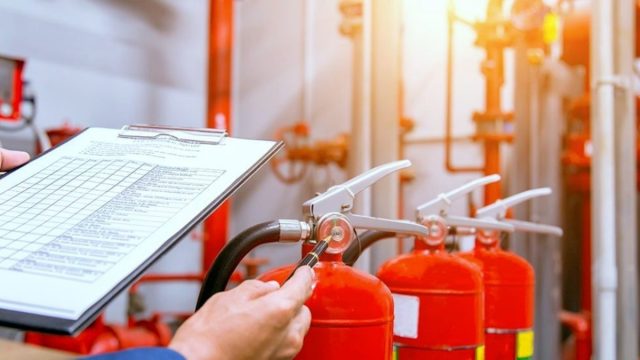Preventing fires is critical in ensuring the safety of individuals and protecting property. One key component in fire prevention is having proper fire extinguisher inspection processes in place. With advancements in technology, various tools, such as fire extinguisher inspection software and Extinguisher Inspection Management Systems (EIMS), can enhance the effectiveness and efficiency of these processes.
The National Fire Protection Association (NFPA) is a non-profit organization that works towards reducing the risk of fire and other hazards. It develops and publishes standards for fire prevention, electrical safety, building construction, and emergency response. These standards are recognized globally and have played a critical role in preventing fires and saving lives.
Understanding NFPA Standards
Contents
The NFPA standards are comprehensive regulations designed to minimize the risk and impact of fire and other hazards. The National Fire Protection Association, a global nonprofit organization, developed these standards. The NFPA brings together experts from various sectors to create guidelines that ensure safety in residential, commercial, and industrial settings.
The Importance of NFPA Standards
According to the U.S. Fire Administration, there were approximately 1.3 million reported fires in 2019, resulting in 3,704 deaths and $14.8 billion in property damage. These numbers highlight the significant impact of fires on individuals, families, and communities.
NFPA standards provide guidelines for proper fire prevention and safety measures and protocols for responding to emergencies. Based on the latest research and technology, these standards are continuously updated and improved, making them an essential tool for preventing fires.
How NFPA Standards Help Prevent Fires
NFPA standards cover a wide range of areas related to fire prevention, including building construction, electrical systems, flammable materials storage and handling, and emergency planning. By following these standards, individuals and organizations can reduce the risk of fires in their homes or workplaces.
For example, the NFPA 101 Life Safety Code outlines requirements for safe building design and maintenance to ensure occupants can safely evacuate in a fire. The NFPA 70 National Electrical Code provides guidelines for installing and maintaining electrical systems to prevent electrical fires.
NFPA standards also play a critical role in emergency response. The NFPA 160 Standard for using Flame Effects Before an Audience sets safety requirements for using pyrotechnics and other special effects in public performances. This helps prevent accidents and injuries, ensuring that entertainment events are enjoyable and safe.
Global Impact of NFPA Standards
The NFPA standards go beyond the United States. Many other countries have adopted them, helping to promote consistency and improve safety practices worldwide.
For example, the NFPA 13 Standard for installing Sprinkler Systems is used in over 90 countries. It provides guidelines for the proper installation and maintenance of fire sprinkler systems, which has led to a significant reduction in the number of deaths and property damage caused by fires.
In addition, NFPA standards are also used as a reference by international organizations such as the International Code Council (ICC) and the United Nations (UN). This demonstrates these standards’ global recognition and impact in promoting fire safety.
The Future of NFPA Standards
Emerging Technologies in Fire Prevention
Emerging technologies are shaping the future of fire prevention. Innovations such as smart sensors, AI-driven fire detection systems, and advanced suppression agents are being integrated into NFPA standards. These technologies promise to enhance the effectiveness of fire safety measures, making them more reliable and efficient.
Trends Shaping NFPA Standards
Several trends are influencing the evolution of NFPA standards. The increased focus on sustainability has led to the development of eco-friendly fire suppression systems. Additionally, the rise of high-rise buildings and complex infrastructures requires more sophisticated safety protocols. The NFPA is actively adapting its standards to address these emerging needs.
Role of Safety Professionals and Building Owners
Safety professionals and building owners are crucial in developing and implementing new NFPA standards. Their on-the-ground experience and feedback are invaluable in shaping practical and effective guidelines. Engaging with the NFPA through committees, public comments, and pilot programs helps ensure that the standards meet the real-world needs of various industries.
Final Thoughts
The NFPA standards and Extinguisher Inspection Management system prevent fires and promote safety. By following these standards, individuals and organizations can reduce the risk of fires, protect lives, and minimize property damage. The global adoption of these standards further emphasizes their importance and highlights their impact on fire safety worldwide.


